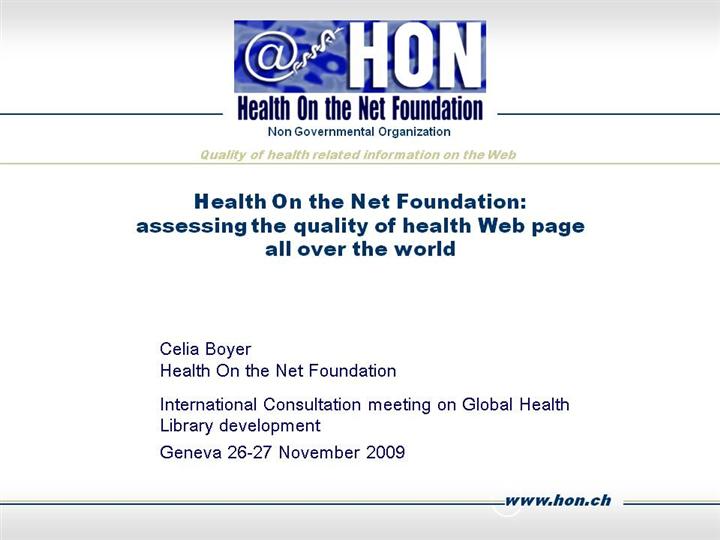| front |1 |2 |3 |4 |5 |6 |7
|8 |9 |10 |11 |12 |13 |14 |15 |16 |17 |18 |19 |20 |21 |22 |23 |24 |25 |26 |27 |28 |29 |30 |31 |32 |33 |34 |35 |36 |37 |38 |39 |40 |41 |42 |43 |44 |45 |46 |47 |48 |49 |50 |51 |52 |review |
 |
We have all seen questionable health-related information on the Internet and dubious information about remedies or treatments has been with us from the beginning of the World Wide Web. Commercial, non-profit and educational web sites present divergent medical claims, and some of these are not supported by scientific evidence. The material is attractively designed and benefits from the cachet afforded by stock photos of kindly physicians, and the obligatory multi-cultural photo-montage of healthy happy people of all ages who are there to reassure the web surfer. Of course, this is just business as usual, but as early as 1995, the founders of Health On the Net, supported by the Geneva health authorities, felt they needed to do something to protect people from potentially dangerous advertising in the guise of information, circulated with no official oversight. Under the impetus of M Guy Olivier Segond, Geneva’s Minister of Health at the time and the late Prof. J.-R. Scherer who was then head of Medical Informatics at the Geneva University Hospitals, HON was created, “to ... be an intermediary and help provide freely available, reliable, trustworthy, and regularly updated health information to patients and professionals.
|